Vegan Globetrotter is supported by our audience. When you purchase through one of our links, we may earn a small affiliate commission. As an Amazon Associate I earn from qualifying purchases. Your cost is not affected.
==================
Have you ever wondered about the world of edible mushrooms? Imagine those lovely umbrella-shaped brown caps, shiny white ones, and even some with thin stems. They elevate so many dishes with their unique flavors. Mushrooms bring an earthy aroma and flavor that can’t be matched.
Cooking with Edible Mushrooms
Here’s the thing. Many of us adore cooking with edible mushrooms. But you should know the difference between these mushrooms and their poisonous counterparts. Safety first, right?
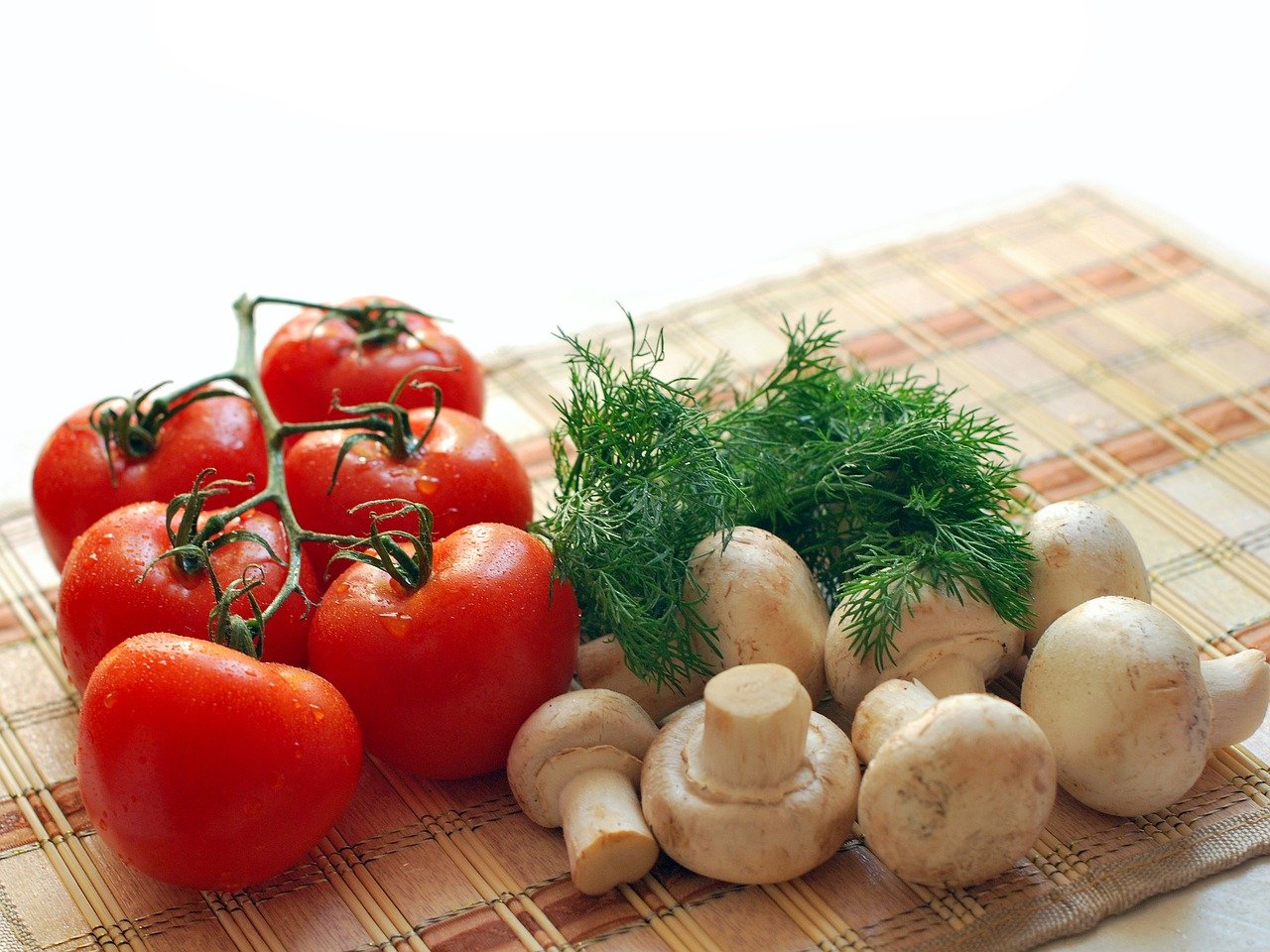
From wild mushrooms like chanterelles to the button mushrooms, there’s a whole variety to explore. And guess what? We’re about to dive into that delicious world together. So, whether you’re a newbie or a seasoned mushroom lover, enjoy reading!
Types of Edible Mushrooms
Alright, let’s dive in! When it comes to edible mushrooms, the variety can be, honestly, a bit overwhelming. But fear not! I’ve got you covered. Let’s break them down into simpler categories:
Wild Mushrooms:
-
Morel Mushrooms
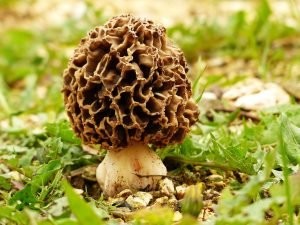
These have a unique honeycomb appearance. Beyond their intriguing looks, they’re cherished for their meaty texture and earthy flavor. Be careful, though. There’s a poisonous look-alike, so always ensure you’re getting genuine morels!
-
Chanterelle Mushrooms
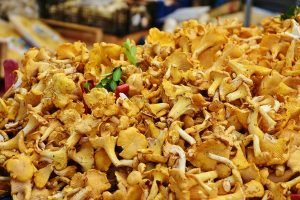
Their vibrant yellow-gold hue is a treat for the eyes. They are known for their fruity scent, reminiscent of apricots, and a mildly peppery taste. Chanterelles are a favorite in gourmet cooking.
-
Black Trumpet Mushroom

Jean-Pol GRANDMONT, CC BY-SA 3.0 <https://creativecommons.org/licenses/by-sa/3.0>, via Wikimedia Commons
These are also known as the “black chanterelle.” Their rich, smoky flavor and dark color add depth to any dish. They’re particularly good in creamy sauces or soups.
-
Hedgehog Mushrooms

Holger Krisp, CC BY 3.0 <https://creativecommons.org/licenses/by/3.0>, via Wikimedia Commons
These get their name from the tiny, spike-like gills underneath their caps. With a slightly sweet and nutty flavor, they’re great in sautés and stews.
Cultivated Mushrooms:
-
Button Mushrooms
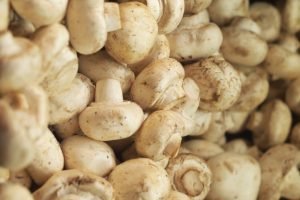
Small, white, or sometimes brown, these are often eaten raw in salads. They have a delicate flavor that intensifies when cooked.
-
Oyster Mushrooms

Flocci Nivis, CC BY 4.0 <https://creativecommons.org/licenses/by/4.0>, via Wikimedia Commons
These have a unique fan-like shape. Apart from the common variety, there’s the king oyster mushroom. It boasts a thicker stem. Their taste? It is slightly peppery when raw, but it becomes milder and sweeter upon cooking.
-
Shiitake Mushrooms
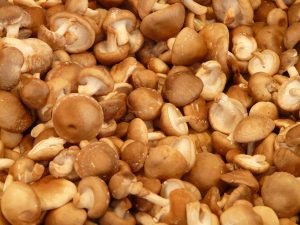
These mushrooms are a staple in Asian cuisine. They have brown caps and a meaty texture. When dried and rehydrated, they have an intense flavor, making them perfect for broths.
-
Porcini Mushrooms

Holger Krisp, CC BY 3.0 <https://creativecommons.org/licenses/by/3.0>, via Wikimedia Commons
With a thick stem and a cap that resembles a bread roll, they have a strong nutty flavor. Dried porcini mushrooms are a flavorful addition to risottos and soups.
-
Crimini Mushrooms

böhringer friedrich, CC BY-SA 2.5 <https://creativecommons.org/licenses/by-sa/2.5>, via Wikimedia Commons
These mushrooms are darker and more flavorful than their button cousins. Cremini mushrooms have a dense, meaty texture, making them perfect for grilling.
Exotic Varieties:
-
Lion’s Mane Mushrooms

rappman, CC BY 4.0 <https://creativecommons.org/licenses/by/4.0>, via Wikimedia Commons
Their fluffy, white appearance isn’t just for show. They have a seafood-like taste, often compared to crab or lobster. This makes them a favorite for vegetarian seafood dishes.
-
Maitake

Sinisa Radic, CC BY-SA 4.0 <https://creativecommons.org/licenses/by-sa/4.0>, via Wikimedia Commons
The “hen of the woods” is not just tasty but also known for its medicinal properties. It has a woodsy flavor with a hint of the forest floor.
-
Lobster Mushrooms

Sharksbaja, CC BY 3.0 <https://creativecommons.org/licenses/by/3.0>, via Wikimedia Commons
Their reddish-orange color hints at their seafood-like taste. They have a firm texture and are often used to add a pop of color and unique flavor to dishes.
Flavors and Textures of Edible Mushrooms
Each mushroom brings its own unique taste and feel to the plate. Let’s unpack these flavors and textures, shall we?
Shiitake Mushrooms
Oh, shiitakes! With their meaty texture, they’re a joy to bite into. When cooked, they release an earthy aroma and flavor. Fresh shiitakes are milder, but when dried, their taste becomes more intense.
Oyster Mushrooms
These fan-shaped delights, including the king oyster mushrooms, have a delicate aroma. With a slightly chewy texture, they’re known for their mild and woodsy flavor with a hint of sweetness. Ever tried them in stir-fries? A match made in heaven!
Morel Mushrooms
Their distinct mesh-like appearance is paired with an earthy flavor that’s a bit nutty. They have a meaty texture, making them a favorite for those looking for a substantial bite.
Portobello Mushrooms
These are the grown-up versions of crimini mushrooms. Their large size means that you can grill them whole. Think of a beefy, meaty texture with a deep, earthy flavor. Have you ever had a portobello mushroom burger? If not, you’re in for a treat!
Enoki Mushrooms
These come with long, thin stems and tiny caps. Their light, crunchy texture is almost refreshing. With a mild flavor, they’re often added to soups or eaten raw in salads.
Chanterelle Mushrooms
These golden mushrooms are soft with a slight chewiness. Their flavor? A mix of fruity and woodsy with a touch of pepperiness. Divine in a creamy mushroom sauce!
Cremini Mushrooms
Think of these as the middle child between button and portobello mushrooms. With a firm texture, they have a richer flavor compared to button mushrooms. Great for sautéed mushrooms on toast!
Lion’s Mane Mushrooms
These fluffy wonders have a unique texture, almost like seafood. Some even say they taste a bit like crab or lobster. Talk about a gourmet experience!
Black Trumpet Mushrooms
Their funnel-like shape is paired with a soft texture. As for the flavor, expect an intense, rich, and smoky note.
Porcini Mushrooms
These are a bit spongy, and when cooked, they release a nutty flavor. If you’re using dried porcini mushrooms, remember they have an even stronger taste!
In essence, mushrooms are nature’s flavor-packed treasures. Each type has its own story to tell on your palate. So, the next time you cook, think of the flavors and textures you want to explore.
Cooking Techniques with Edible Mushrooms
Mushrooms also offer a playground of possibilities when it comes to cooking techniques. Let’s whisk through some popular methods and their best buddies in the culinary world:
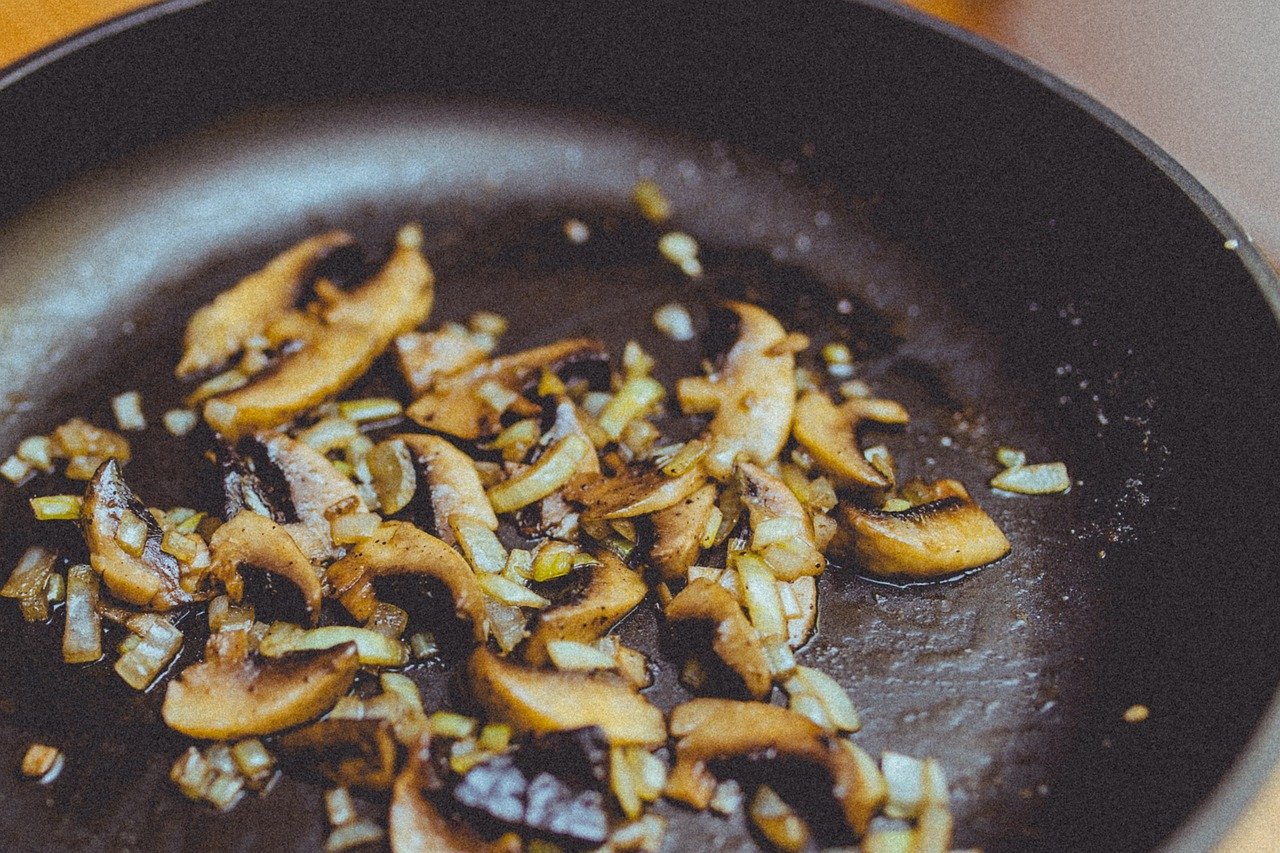
Sauteing
A classic! Sautéed mushrooms, especially when done with a dash of olive oil or a dollop of butter, become beautifully browned and flavorful. Pair them with fresh herbs, a squeeze of lemon juice, or even a sprinkle of soy sauce to elevate their taste. Great with button mushrooms or cremini mushrooms.
Grilling
Perfect for those meaty mushrooms like portobello mushrooms or king oyster mushrooms. Some brush of olive oil, a pinch of salt, and onto the grill they go! They make excellent burger replacements or side dishes. This is especially true when paired with fresh herbs.
Stir Frying
Enoki mushrooms and oyster mushrooms shine here. Quick, high heat keeps their textures intact. Toss them with some veggies and maybe a splash of soy sauce. Now, you’ve got an Asian-inspired dish ready in minutes.
Roasting
When you want to bring out an intense flavor, roasting is the way. Porcini mushrooms and shiitake mushrooms are top choices. Try combining them with garlic, rosemary, and a light drizzle of olive oil for a side dish that’s hard to resist.
Simmering
For those comforting stews and soups, add in morel mushrooms or wild mushrooms. Their flavors infuse beautifully in liquids. Pair with root vegetables and maybe a splash of wine or broth for a hearty meal.
Eating Raw
Yes, you can eat some mushrooms raw, like button mushrooms. Slice them thin and toss them into salads with a little bit of lemon juice, and perhaps some shaved parmesan.
Deep Frying
For a crispy treat, why not? King oyster mushrooms have a firm texture. You can slice them into strips, battered and fried for a crunchy snack. Pair with a tangy dip for perfection.
Perfect Pairings with Mushrooms
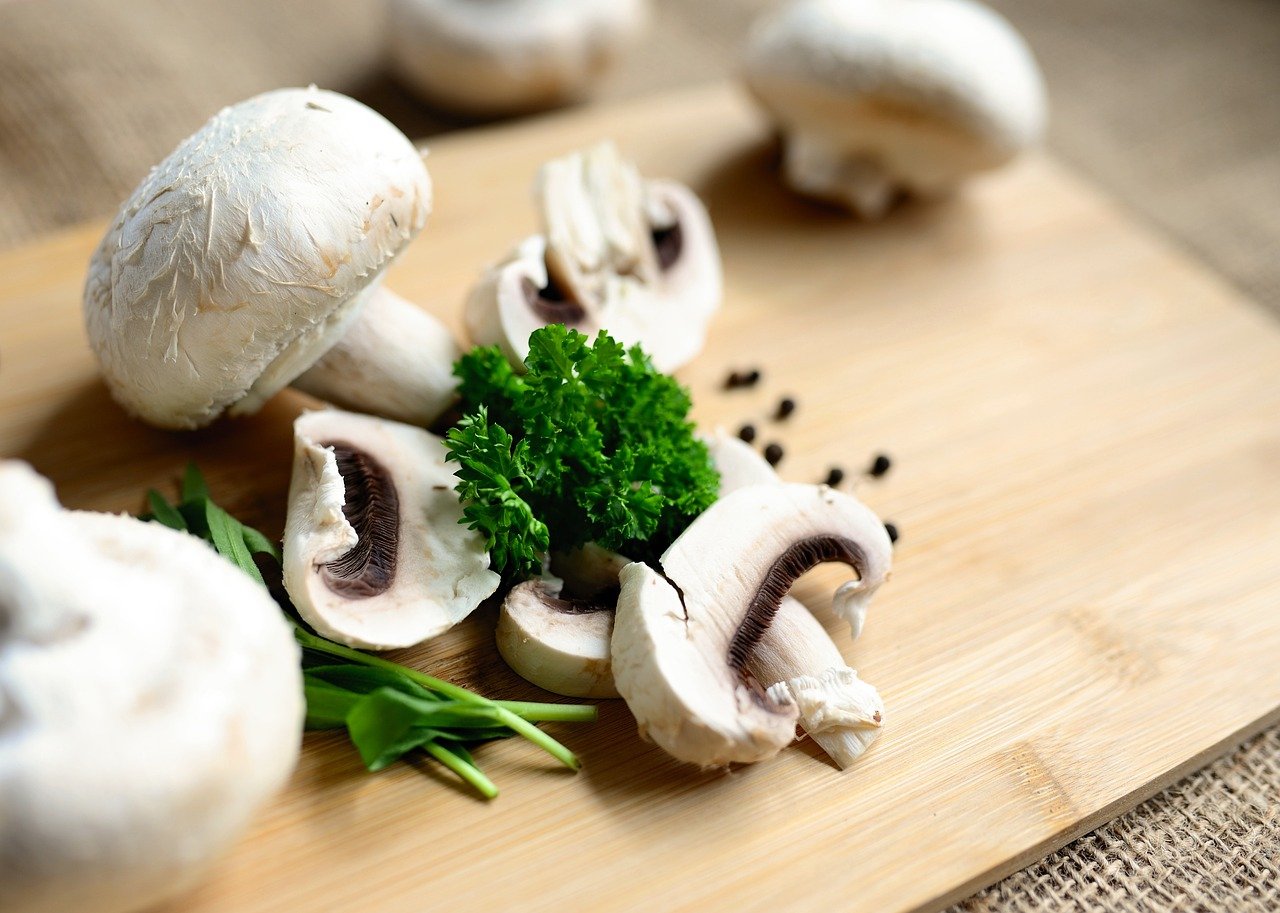
Mushrooms & Herbs
Rosemary, thyme, and parsley are mushrooms’ best buddies. Their aromatic nature complements the mushrooms’ earthy tones.
Mushrooms & Wines
A glass of red or white wine, depending on the mushroom dish, can elevate your dining experience. Think creamy mushroom sauces with a crisp white or grilled mushrooms with a light red.
Mushrooms & Proteins
Whether it’s tofu in East Asian dishes, the pairings are endless.
Storage and Handling of Mushrooms
So, you’ve got a lovely batch of edible mushrooms, and you’re wondering how to keep them fresh? Let’s unravel the mystery of storing and handling these little treasures:
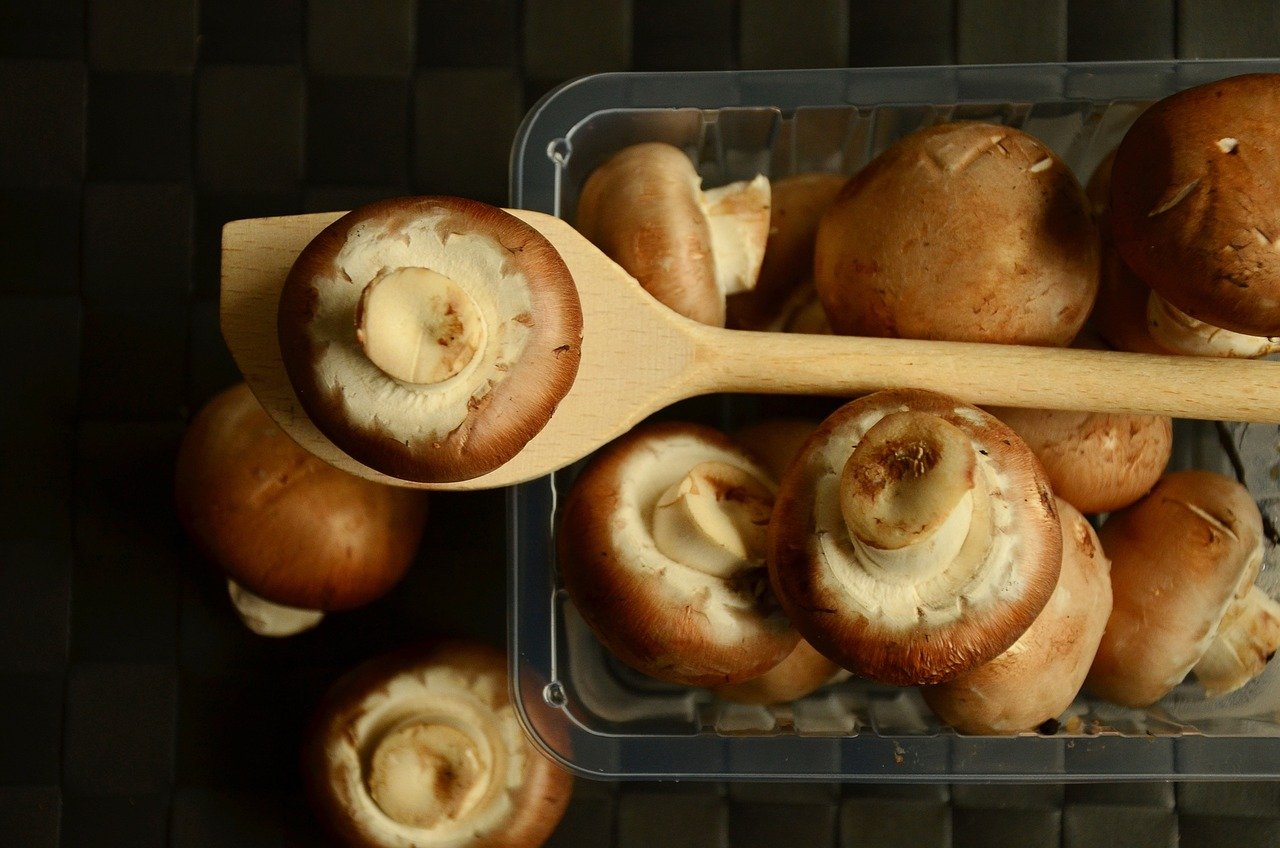
Fresh Mushrooms Storage
Store your fresh mushrooms, be it shiitake or button mushrooms, in a paper bag inside the fridge. This method allows them to breathe and keeps them dry. Remember, mushrooms hate moisture! Plastic bags can make mushrooms sweaty. And sweaty mushrooms? Not a good look (or taste). If you must use a container, line it with paper towels. This will help absorb any excess moisture.
Dried Mushrooms Storage
Got some dried porcini mushrooms or maybe shiitake mushroom slices? Place them in airtight containers in a cool, dark place. They’ll stay good for several months.
Cleaning Mushrooms
Never soak your mushrooms in water! They’re like little sponges and will absorb it, leading to a loss in flavor. Use a soft brush or cloth to gently wipe off any dirt. For mushrooms with nooks and crannies, like morel mushrooms, a quick rinse and immediate pat dry can work.
Prepping for Cooking
For some types of mushrooms, like shiitakes, the stems can be tough. It’s best to remove them before cooking. Don’t toss them though! You can use them in broths for added mushroom flavor. Depending on your recipe, slice or chop your mushrooms. Remember, the thinner they are, the quicker they’ll cook.
Longer-Term Storage
Can you freeze mushrooms? Yes! But cook them a bit first. Sauté your mushrooms in a bit of olive oil, let them cool, then freeze in bags or containers. Perfect for future stir-fries or pasta dishes! Got a bunch and want them to last? Drying is a great option, especially for wild mushrooms. Once dried, store them in a cool, dark place.
Watch Out
Always keep an eye on your stored mushrooms. If they look slimy, have dark spots, or give off a bad odor, it’s time to say goodbye. Safety first!
Video Credit: @LearnYourLand
Safety with Mushrooms
Not All Mushrooms are Edible
This might sound like something out of a fairy tale, but some mushrooms can be harmful, even deadly. Always ensure you’re picking or buying edible mushrooms and avoiding the poisonous ones. Wild mushrooms, like chanterelle or black trumpet mushrooms, have unique flavors. But they can have look-alikes that are toxic. If you’re not a seasoned mushroom forager or expert, it’s best to buy from reputable sources.
Raw vs. Cooked
You can eat some mushrooms raw, but you need to cook the others to eliminate toxins. For instance, you should always cook morel mushrooms. They can contain low levels of hydrazine toxins.
Proper Identification
If you’re looking to forage or buy wild mushrooms, get a good field guide or join a local mycology group. The knowledge will help you distinguish between edible mushrooms and those that aren’t. It’s an old saying, but it’s golden. If you’re unsure about a mushroom’s safety, it’s better to err on the side of caution.
Allergic Reactions
Just like with other foods, some people might be allergic or sensitive to certain types of mushrooms. If it’s your first time trying a new variety, start with a small amount and monitor your body’s reaction.
Store-Bought vs. Wild
The common mushrooms you find at grocery stores are cultivated in a controlled environment. Thus, they are generally safe. These include button mushrooms or crimini mushrooms. If buying wild mushrooms from a market or store, ensure they’re from a trustworthy source. Ask questions about what you’re purchasing.
Wrapping it Up
We’ve had quite the adventure, haven’t we? From getting to know fun mushroom types (like shiitake and portobello) to finding out how they taste and feel, we’ve learned a lot! Mushrooms can be a game-changer in our meals. Imagine pasta with a creamy mushroom sauce or a plate of mushrooms fried with some yummy herbs. Mouth-watering, right?
But here’s a big thing to remember: Stay Safe! Not all mushrooms are good for eating. Some can be harmful. So, always be sure about what you pick or buy.
Thanks for coming on this journey with me. Now, go on and cook up some mushroom magic!
FAQs
I've heard of oyster mushrooms. Are they seafood?
No! Oyster mushrooms get their name from their shape and pale color, but they’re 100% veggies. They have a mild, delicate flavor and are great in stir-fries.
How do I tell if a mushroom has gone bad?
If your mushrooms are slimy, have a sour smell, or have dark spots, it’s time to toss them out. Storing mushrooms properly can help keep them fresh for longer.
Are there mushrooms that you can eat raw?
Yes! You can eat some mushrooms, like button or crimini mushrooms, raw in salads. However, always ensure they’re clean and, if unsure, cooking them is a safer bet.
Why do some recipes ask for dried mushrooms?
Dried mushrooms, like dried porcini mushrooms, pack an intense flavor. When you add them to dishes, they give a strong mushroom flavor, which many chefs and foodies love.
I found a beautiful mushroom in my backyard. Can I eat it?
Please be cautious! While it might look tempting, unless you’re an expert, it’s hard to tell poisonous mushrooms from edible ones. It is better to admire its beauty and stick to your grocery store or farmer’s market for munching.
Dive into the Magic of Mushrooms
Discover the most mouth-watering ways to cook and enjoy edible mushrooms! Join us on Facebook, Instagram, and Twitter for delicious recipes, helpful tips, and a passionate community that celebrates the culinary wonders of mushrooms.
Facebook: https://www.facebook.com/VeganGlobetrotter
Instagram: https://www.instagram.com/_veganglobetrotter/
Pinterest: https://www.pinterest.com/theveganglobetrotter
Twitter: https://twitter.com/VeganGlobetrot
Let’s explore the mushroom magic together!
For more information on mushrooms, check out our website: veganglobetrotter.com



Don't miss out
when new recipes and information are added!
Join our newsletter for free recipes,
healthy living inspiration, and special offers
You have Successfully Subscribed!